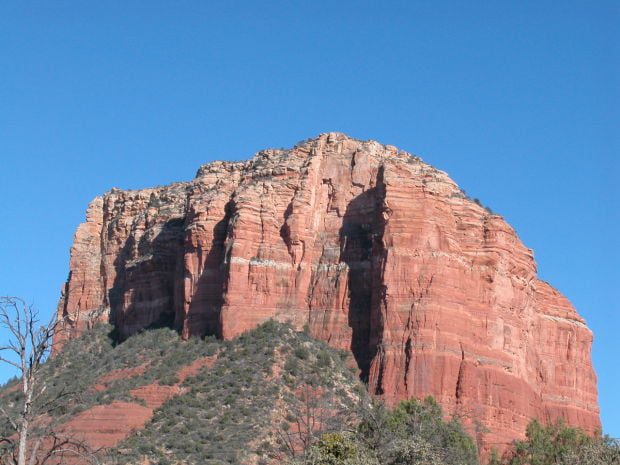
Planning summertime get-away from Malibu? Well, consider visiting the mystical red earth of Sedona, Ariz.
With spectacular sandstone cliffs to the north and east and awesome red-iron-rich weathered rock formations to the south, Sedona stands on the southern edge of the Colorado Plateau on the Mogollon rim.
An incredible variety of species exist here as desert vegetation meets woodlands and montane forests, including 500 types of plants, 55 different mammals, 180 species of birds, 35 snakes, 20 species of fish, lizards and amphibians. Sedona is a perfect destination for outdoor enthusiasts to explore the amazing diversity of ecosystems and geologic formations.
The climate of this region is semi-arid receiving approximately 17 inches of precipitation a year, some of it falls as snow because Sedona’s is 4,000 feet above sea level. The bulk of the precipitation occurs as monsoonal rainfall in July and August. Tropical air from the Gulfs’ of California and Mexico converges over central Mexico, and it’s sucked northward over the dry Southwestern deserts. It’s the perfect time of year to see monsoon-like summer thunderstorms in Arizona and New Mexico.
The dazzling red rocks of Sedona tell the story of 320 million years.
These rocks are red because each individual sand grain is coated with red iron oxide – the remains of the ancestral Rocky Mountains. As these grains were laid on the earth they attracted iron-rich solutions from the ground water. Erosion over millions of years exposed Sedona’s breathtaking red rocks of today.
Of all the Red Rock County formations, Bell Rock is considered the magnet. Its energies attract people out of their cars without hiking boots or water right up its slopes. By all means, explore this magnificent rock but take water, wear appropriate footwear and don’t forget sunscreen.
Twelve miles north of Sedona is Sterling Spring. It taps into the ancient aquifer below the Colorado Plateau providing water to Oak River, in turn creating the fertile Verde Valley.
The majestic Arizona sycamores, alders and Fremont cottonwoods of the Oak River provide shade, creating necessary habitat for wild critters. Those forests also slow spring floodwaters; they are crucial in maintaining healthy ecosystems. Tree roots remove chemicals like organic pollutants from the water by reducing sediments from entering the river.
The hillsides overlooking the Oak River are dotted with clumps of woodland pinyon pine and juniper trees. This tenacious ecosystem occurs throughout the West encompassing over 75,000 square miles.
These woodlands provide habitat and food for many critters including native bark beetles and endangered bighorn sheep. The pinyon pines rely upon the pinyon Jay to open its cones and disperse seeds throughout the woodlands. The pines provide food for the birds that occasionally forget where some seeds are cached. In the springtime those forgotten cached seeds draw moisture from the soil and germinate. With any luck, seedlings become saplings and eventually mature trees form woodland forests. Pines feed birds and birds’ plant trees!
Douglas-fir’s and Ponderosa pines live above the pinyon woodlands on the wetter hill-tops forming continuous mountain forests. These trees have evolved with lightning-induced fires. Thick bark and holding branches 20 feet above the ground are two important adaptations allowing these trees to tolerate fast burning surface fires.
Sedona is a must see northern Arizona destination — a stone’s through away from the Grand Canyon.
Earth Dr Reese Halter is a broadcaster, conservation biologist, and author of The Insatiable Bark Beetle.